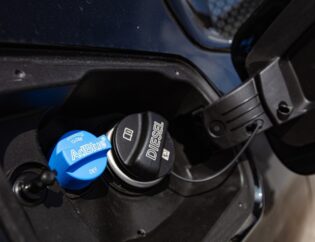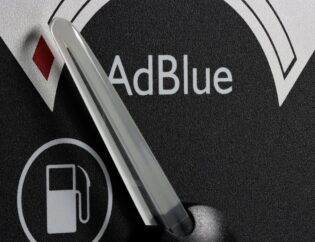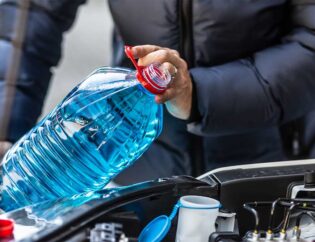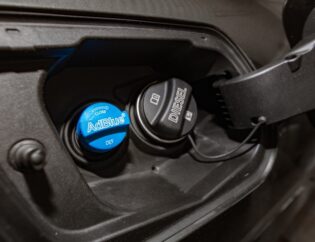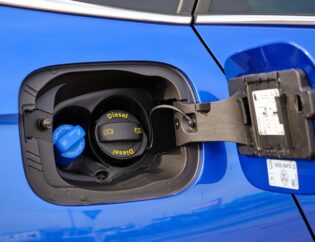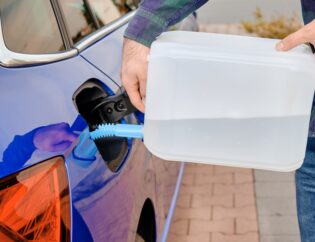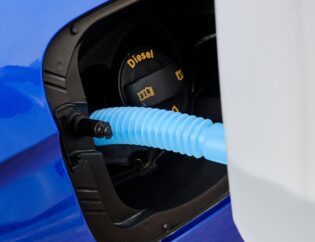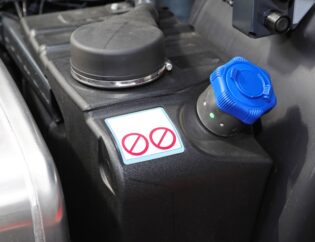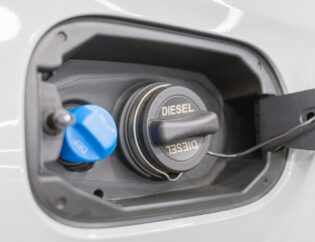
DEF is a carefully mixed concoction of deionized water and urea. Nitrogen oxide (NOx) emissions from the diesel engine are reduced when urea is introduced into the SCR system and interacts with exhaust gasses.
DEF’s main goal is to make diesel cars compliant with strict clean air NOx emissions standards. It transforms toxic NOx into less damaging pollutants like nitrogen, water vapor, and trace amounts of carbon dioxide.
By reducing NOx emissions, DEF helps minimize the impact of diesel engine pollution on air quality and the environment. It’s an important emissions control agent for today’s cleaner-burning diesel engines. Keep reading this blog post by Azure to learn more.
Contents
- 1 Most Common Diesel Exhaust Fluid Problems
- 2 DEF Tank Sensor Issues
- 3 DEF Pump Issues
- 4 Causes of Contamination
- 5 DEF Crystallization
- 6 DEF Tank Sensor Issues
- 7 Troubleshooting Sensor Problems
- 8 Replacing Faulty Sensors
- 9 DEF Pump Issues
- 10 Replacing Faulty Pumps
- 11 Preventing DEF Problems
- 12 Troubleshooting DEF Issues
- 13 When to Seek Professional Help
- 14 Frequently Asked Questions
- 15 Conclusion
Most Common Diesel Exhaust Fluid Problems
Diesel exhaust fluid (DEF) is vital to modern diesel engine exhaust treatment systems.
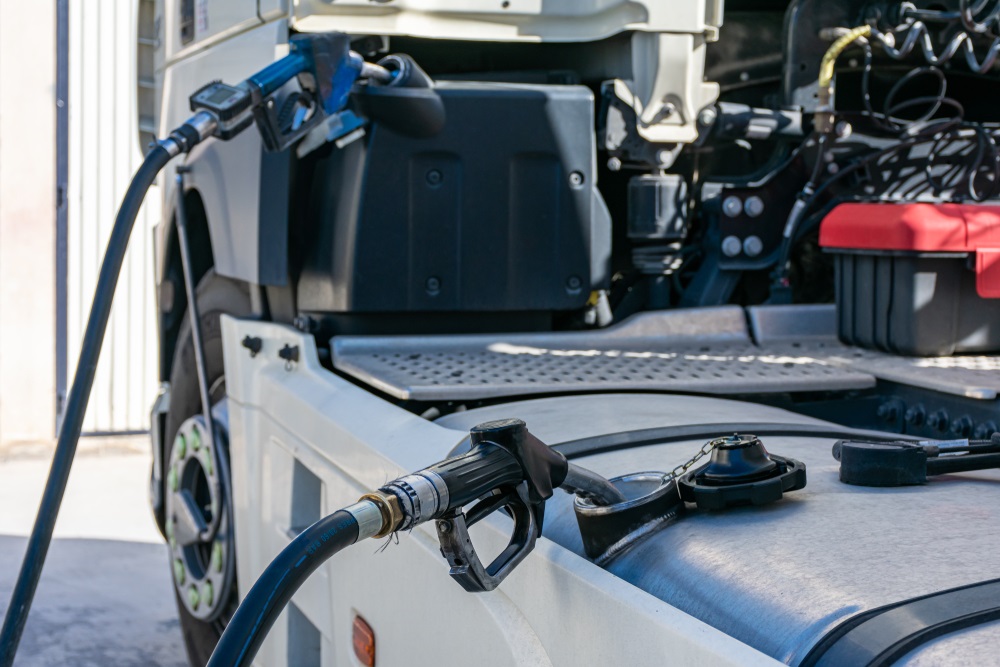
However, DEF can sometimes cause issues if not properly maintained. Here are some of the most common diesel exhaust fluid problems diesel owners may encounter:
Contaminated or Degraded DEF
DEF has a limited shelf life and can degrade over time, especially if stored improperly in high temperatures. Degraded DEF is low quality and can’t be used by the SCR system to reduce emissions. Contaminants like dirt, other chemicals, or water in the DEF tank will also lead to quality issues. Using contaminated or degraded DEF can damage expensive exhaust treatment components.
Prevention involves always using fresh, high-quality DEF within the recommended shelf life and keeping the tank and filling equipment clean. The entire tank should be drained and flushed if contaminated or degraded DEF is suspected. A professional shop can test DEF quality.
DEF Crystallization
DEF contains urea and water. In cold conditions, DEF can freeze and crystallize. The urea crystals can clog filters, lines, and pumps designed for liquid DEF flow. This starves the SCR system of DEF and causes emission control issues.
Insulating DEF tanks, lines, and pumps can help prevent crystallization in cold climates. If crystallization does occur, carefully flushing the system with warm water may be required to dissolve the urea crystals. Frequent tank refills with fresh DEF can also help.
DEF Tank Sensor Issues
The DEF tank has level sensors to monitor how full it is. Like any sensor, these can fail or become contaminated over time and display false readings. Bad-level sensor data confuses the truck computer and causes DEF-related fault codes.
Replacing faulty DEF-level sensors requires specialist diagnostics and service shop work. Inspect technicians carefully test sensor operation during any DEF tank repairs or service.
Frozen DEF Lines
The DEF lines can freeze in very cold weather, especially with poor tank/line insulation. This blocks the flow of fluid to the SCR system. Heating the lines with a hair dryer or moving the vehicle to a warmer place may help thaw them temporarily. But the best solution is improving weather protection and insulation.
DEF Pump Issues
Electric pumps move DEF from the tank into the SCR system. Like any electrical component, they can fail over time.

More commonly, pump failures result from contaminated or crystallized DEF that jams the impeller.
Diagnose DEF pump issues by checking for power at the pump and listening for pump motor sounds. If the pump itself is bad, replacement is required. The system must be flushed if the pump is jammed with crystallized or contaminated DEF.
Diesel Exhaust Fluid can become contaminated or degraded from improper storage, mixing with incompatible fluids, or exposure to extreme temperatures. This causes several issues:
Causes of Contamination
- Storing DEF in an unapproved container that leeches chemicals or metal ions into the fluid
- Accidental mixing of DEF with other automotive fluids like engine oil or coolant
- Prolonged exposure to high temperatures above 90°F that cause urea to decompose
- Freezing temperatures below 12°F allow water in DEF to freeze and concentrate impurities
Signs of Contaminated DEF
- Cloudy, discolored, or strange-smelling DEF
- Crystals or sediment visible in the DEF tank
- Check engine light illuminating with codes related to the DEF system
- Higher diesel exhaust emissions were noticed during a routine inspection
Effects on the Emissions System
- DEF quality sensors detect the contamination and turn off the emissions system
- The diesel particulate filter and SCR catalyst can become damaged over time
- Excess diesel particulate and NOx emissions are released, failing inspection
- The buildup of urea deposits from degraded DEF can clog components
- Repairs like flushing the DEF system, sensor replacement, and even replacing the catalytic converter may be required
Proper DEF fluid storage, handling, and maintenance are crucial to avoid contamination issues. If contamination is suspected, professional diagnosis and servicing are needed to prevent lasting emissions and engine damage.
DEF Crystallization
Diesel exhaust fluid (DEF) crystallization occurs when the urea concentration becomes too high, causing the DEF to solidify and crystallize.
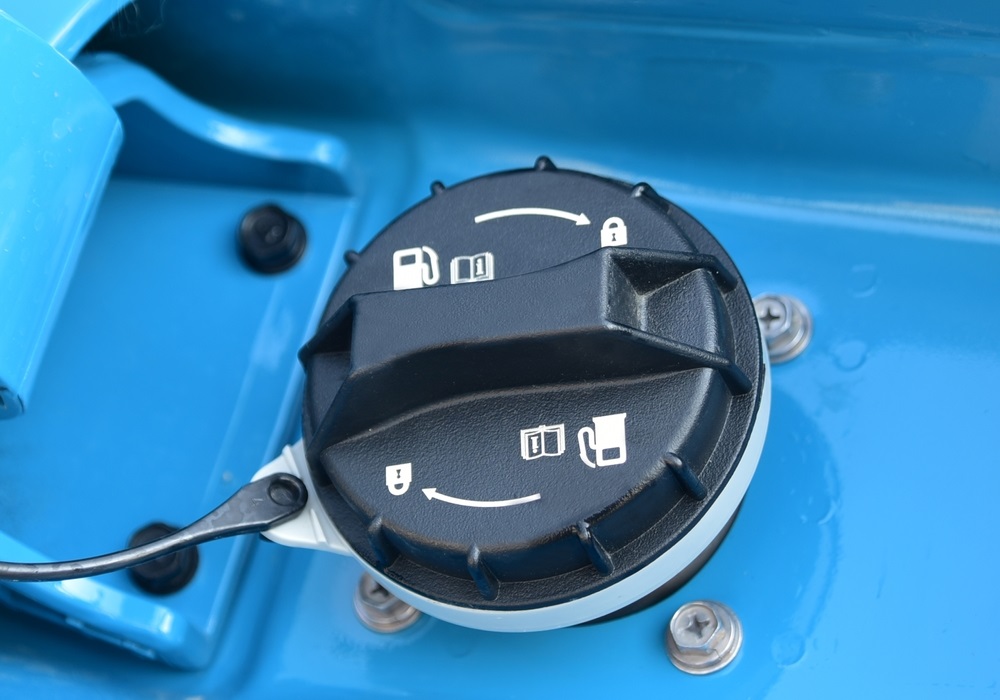
This is one of the most common DEF problems diesel vehicle owners face.
Some key causes of DEF crystallization include:
- Exposure to excessive heat. DEF is designed to remain in liquid form at temperatures up to 90°F. Higher temperatures cause the water in DEF to evaporate, resulting in a higher urea concentration and eventual crystallization.
- Infrequent vehicle use. DEF can crystallize over time if a vehicle sits unused for an extended period. This allows water to evaporate from the tank, increasing urea concentration.
- Improper DEF refilling. Adding straight urea instead of premixed DEF can lead to crystallization. Even adding water to diluted DEF can raise the urea concentration.
Signs that DEF has crystallized include:
- Solid urea buildup around the DEF tank fills the neck or inside the tank. Crystals may resemble rock salt.
- DEF pump failure or damage. Crystals can prevent the pump from working properly or even seize the pump completely.
- SCR system codes or warnings. These alert the driver to issues like blocked DEF lines or dosing faults.
Crystallized DEF can degrade or block the SCR system, preventing it from reducing NOx emissions properly. Effects may include:
- DEF lines are getting clogged with urea deposits, preventing DEF from flowing.
- The DEF injector and dosing module issues are due to crystallized DEF passing through.
- Catalytic converter damage from high NOx levels if DEF isn’t dosed.
- Reduced engine power initiated by the vehicle as a self-protection measure.
The only remedy for crystallized DEF is to flush the SCR system and replace contaminated components fully. This requires professional servicing to avoid further issues. Preventing DEF crystallization in the first place is critical through proper storage and filling.
DEF Tank Sensor Issues
One common issue with diesel exhaust fluid systems is faulty sensors in the DEF tank. These sensors measure the fluid level and quality in the tank. Some common problems include:
Common Sensor Failures
- Level sensors can malfunction and inaccurately report the DEF level, leading to alerts about low fluid when the tank is full. Mineral deposits often cause this on the sensor probes.
- Quality sensors can fail and trigger erroneous alerts about contaminated or incorrect fluid when the DEF is fine. This is typically due to electrical issues or sensor wear.
- Connector issues like corroded pins or loose wiring can cause intermittent connection problems and error codes related to sensors.
- Short circuits due to pinched wires, moisture ingress, or loose connections can lead to sensor failure and cause the DEF system to turn off the vehicle.
Troubleshooting Sensor Problems
If you suspect an issue with the DEF tank sensors, there are a few troubleshooting steps:
- Inspect sensor connections and wiring for corrosion, damage, or loose pins. Clean connectors and ensure wires are securely fastened.
- Check for sensor error codes using a diagnostic scan tool. This can help pinpoint specific sensors that may have failed.
- Try disconnecting and reconnecting sensors one at a time to isolate the problem.
- Use a multimeter to check sensor resistance or signal values and compare them to specifications.
- Monitor sensor outputs with a live data scanner while adding or removing DEF to verify operation.
Replacing Faulty Sensors
If troubleshooting confirms a sensor is defective, replacement is required. When replacing DEF sensors:
- Purchase an OEM sensor from a reputable supplier, since aftermarket parts often fail prematurely.
- Carefully remove the old sensor without damaging the connector pins or wiring.
- Thoroughly clean the sensor mounting area before installation.
- Apply thread sealant to prevent leaks. Tighten exactly to the specified torque.
- Clear any codes and calibrate the new sensor according to manufacturer instructions.
- Retest operation to confirm normal system function before returning the vehicle to service.
With attention to potential sensor issues, proper troubleshooting, and component replacement when needed, DEF system problems can be resolved to keep vehicles running cleanly and efficiently.
Frozen DEF Lines
Diesel exhaust fluid (DEF) can freeze when exposed to prolonged temperatures below 12°F. Here are some key things to know about frozen DEF lines:
Causes of Freezing
- Driving for extended periods in extremely cold weather.
- Park the vehicle outdoors overnight in below-freezing temperatures.
- The malfunctioning DEF heating system was designed to prevent freezing.
- Cracks or damage to DEF tank or lines, exposing fluid.
Signs of Frozen DEF Lines
- Illuminated warning lights on the dashboard indicate blocked or frozen DEF lines.
- Lack of DEF flow to selective catalytic reduction system.
- Engine derate or power loss.
- Inability to refill DEF tank due to frozen lines.
Thawing Frozen Lines
- Move the vehicle to a warm garage to allow lines to thaw over several hours.
- Apply heat directly to exposed lines using a heat gun or hot water.
- Add an approved DEF thawing agent like Power Service Diesel 911 to help thaw lines.
- Start the engine and let it warm up, heating the DEF lines.
- Consult your owner’s manual or dealer for other approved thawing methods.
- Do not try to force frozen lines to thaw by starting the vehicle when lines are blocked. This can damage the SCR system.
Frozen DEF lines can be prevented by maintaining the DEF heating system, parking indoors when possible, and fixing any DEF tank or line cracks immediately. Seek professional help for persistent frozen lines not resolved by thawing attempts. Proper diagnosis and repair will get your DEF system running smoothly again.
DEF Pump Issues
The DEF pump delivers diesel exhaust fluid from the tank to the dosing injector. Like other components, it can fail over time. Here are some key things to know about DEF pump problems:
Common DEF Pump Failures
- Seal wear – seals can leak, causing loss of pressure
- Motor failure – pump motor can burn out, leading to low/no flow
- Controller failure – The controller tells the motor when to run; if it fails, the pump won’t activate
Diagnosing Pump Problems
Signs of a bad DEF pump include:
- DEF pressure codes or warning lights
- Visible leaks around the pump seals
- The pump is not turning on even when DEF is needed
You can use a multimeter to check for power at the pump motor. No power indicates a controller or wiring issue. Low power could mean a bad motor.
Replacing Faulty Pumps
Replacing a faulty DEF pump requires disconnecting all hoses and electrical connectors. Installation is the reverse of removal. Be sure to prime the pump after replacing it to remove air from the system.
Pump motors can sometimes be replaced without doing a complete pump swap. Consult a service manual for pump-specific procedures.
Using quality parts and maintaining the DEF system can help avoid premature pump failures. But when problems do occur, following the proper diagnostic steps and replacement procedures is key to getting the system operational again.
Preventing DEF Problems
Prevention is one of the best ways to avoid issues with diesel exhaust fluid.
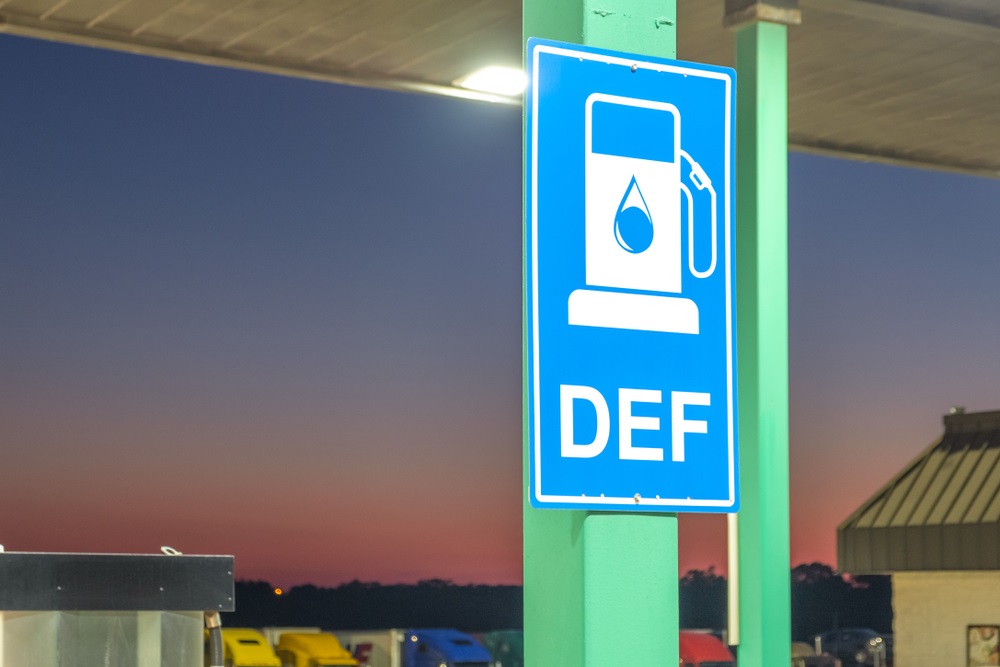
Here are some tips for preventing common diesel exhaust fluid problems:
Proper Storage and Handling
- Store DEF between 12°F to 86°F. Extended exposure to higher or lower temperatures can cause degradation.
- Keep the DEF tank sealed and free of contaminants. Avoid pouring unused fluid back into the main tank.
- Check expiration dates on DEF containers. Discard if it is expired, as the urea can break down over time.
- Never mix DEF with any other fluids. It is not compatible with diesel fuel, gasoline, or water.
- Use only DEF meeting ISO 22241 specifications. Off-brand or low-quality DEF often causes issues.
Routine Maintenance
- Periodically check DEF tank levels and refill as needed. Running low may indicate a leak or delivery issue.
- Inspect DEF lines and connectors. Fix any leaks immediately to prevent crystallization.
- Replace deteriorated or damaged DEF tank caps. A loose cap can allow contaminants to enter.
- Clean any DEF residue buildup around fill openings or lines to avoid contamination.
Follow Manufacturer Guidelines
- Adhere to the DEF refill schedule in the owner’s manual. This helps maintain optimal performance.
- Only use DEF brands recommended by the manufacturer. Unapproved brands can damage components.
- Perform all scheduled maintenance on DEF system components. This helps maximize service life.
- Update DEF dosing system software and firmware when available. Keeping current helps avoid errors.
Properly storing and handling DEF, performing routine maintenance, and following manufacturer guidelines can prevent the most common DEF issues. This saves on costly repairs down the road.
Troubleshooting DEF Issues
When experiencing diesel exhaust fluid problems, the first step is troubleshooting to diagnose the issue properly. Here are some tips for troubleshooting DEF problems yourself before taking your vehicle to a professional mechanic:
- Read the Diagnostic Trouble Codes (DTCs) – Most DEF issues will trigger an engine fault code that can help narrow down the problem. Use an OBD2 scanner to pull the codes, then cross-reference the code meaning in the vehicle’s service manual or an online database like OBD-codes.com. Write down the full code string for reference.
- Follow a Diagnostic Flowchart – Many service manuals provide detailed flowcharts that map out the step-by-step diagnostic process based on particular DTCs. Follow the steps to test components like DEF quantity, DEF quality, wiring, or DEF pump operation. Flowcharts are especially useful for troubleshooting more complex issues.
- Test Components – If a flowchart points to a potentially faulty component, it must be tested. Some examples:
- DEF pump – check for power at the pump harness. If there is no power, test the fuse, relays, and voltage at the ECU pins. If power is present, the pump may need to be replaced.
- NOx sensors – check sensor operation per the factory diagnostic steps. If out of spec, replace the sensor.
- DEF heater – check for power and ground at the heater wires. If it is okay, use a multimeter to check heater resistance. If open or short-circuit, replace the heater.
Following a systematic troubleshooting process of reading codes, diagnostics, and testing will reveal the root cause of most DEF faults. However, for intermittent or challenging issues, a professional diagnosis may be needed.
When to Seek Professional Help
Most diesel exhaust fluid problems can be resolved with some troubleshooting and minor repairs. However, there are times when it’s best to seek assistance from a professional diesel mechanic or dealership service center:
For Major Component Replacement
If the issue is traced back to a failed DEF pump, injector, tank sensor, or lines, these components may need to be replaced. Replacing DEF system parts often requires specialized tools and software that are only available to professional mechanics. Don’t attempt to replace major components, as this could void warranties.
If Problem Persists After Troubleshooting
Sometimes, troubleshooting steps like inspecting for leaks, checking connections, adding additives, or replacing small parts may only partially resolve the issue. If you’ve tried to diagnose and address the problem without success, it’s time to bring in a professional. Persistent diesel exhaust fluid problems could indicate an underlying issue that requires advanced diagnostic work.
For SCR Cleaning Services
Professional cleaning may be required if contaminated or degraded DEF has clogged up components like the catalytic converter, diesel particulate filter, or SCR catalyst. Specialized chemicals and equipment are needed to flush and restore clogged exhaust components to properly functioning. Keep lingering contamination issues from being addressed, as they can lead to decreased performance, derates, and permanent damage over time.
Frequently Asked Questions
What is Diesel Exhaust Fluid (DEF)?
Diesel Exhaust Fluid (DEF) is a non-toxic solution made of 32.5% urea and 67.5% deionized water. It’s used in diesel engines to reduce nitrogen oxide emissions, a requirement in many countries to meet environmental standards.
How Does DEF Work in Diesel Engines?
DEF is injected into the exhaust stream of diesel vehicles. It breaks down dangerous NOx emissions into harmless nitrogen and water, significantly reducing the environmental impact of diesel engines.
What Are Common Problems Associated With DEF?
Common issues include DEF contamination, incorrect fluid levels, clogged injectors or lines, sensor malfunctions, and crystallization of DEF.
How Can I Prevent DEF Contamination?
Always use high-quality DEF and store it in a clean, sealed container. Avoid exposure to dirt, dust, or other contaminants during handling.
Conclusion
In summary, it’s smart to bring in qualified diesel technicians for major repairs, stubborn issues, or when the root cause is unclear. They have the skills and resources to properly diagnose DEF system problems and get your vehicle’s emissions control system back in good working order. Contact Azure Chemical today to learn more.

